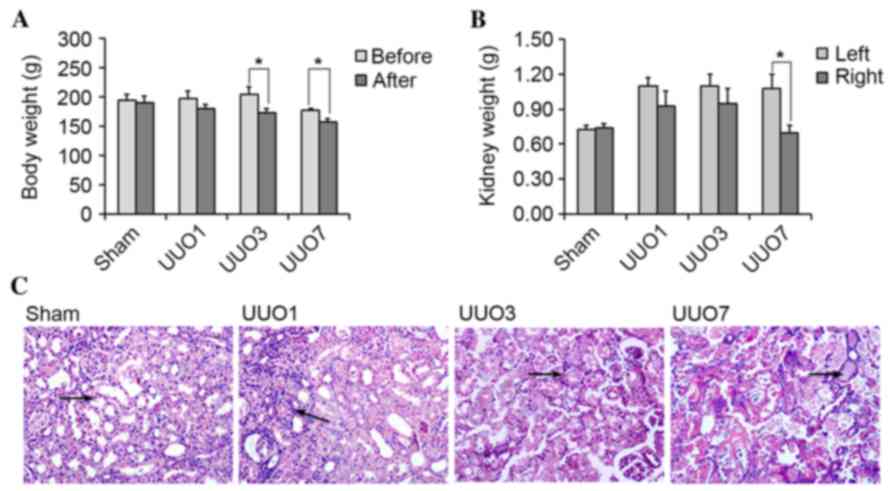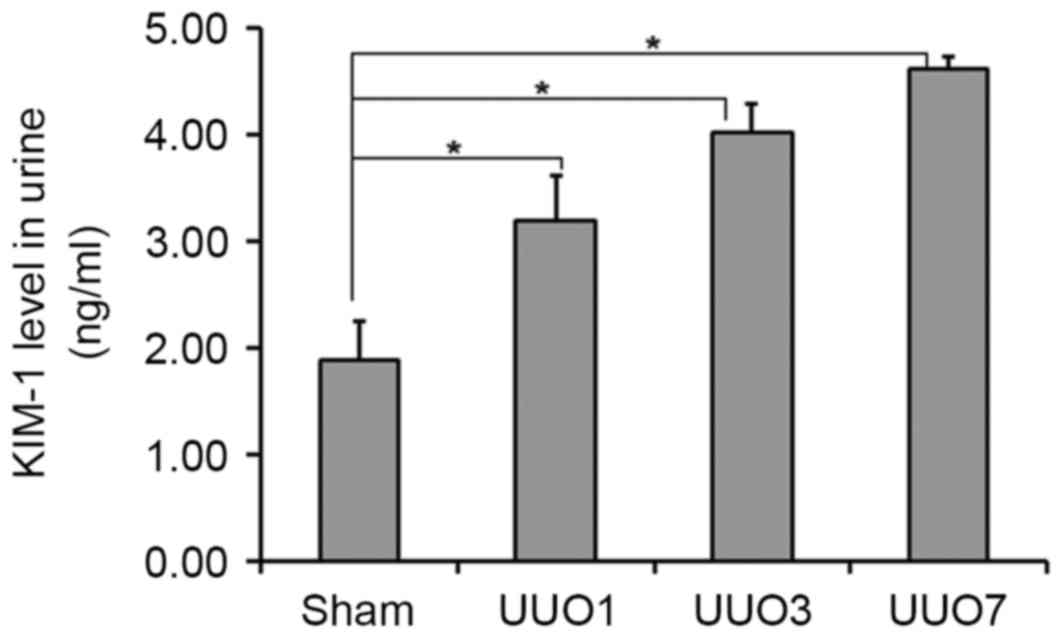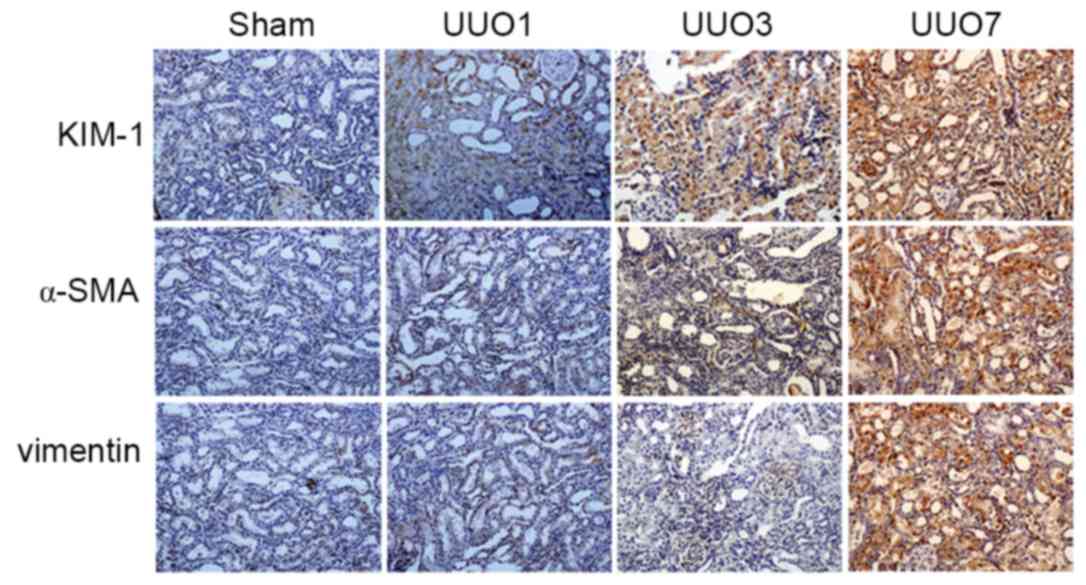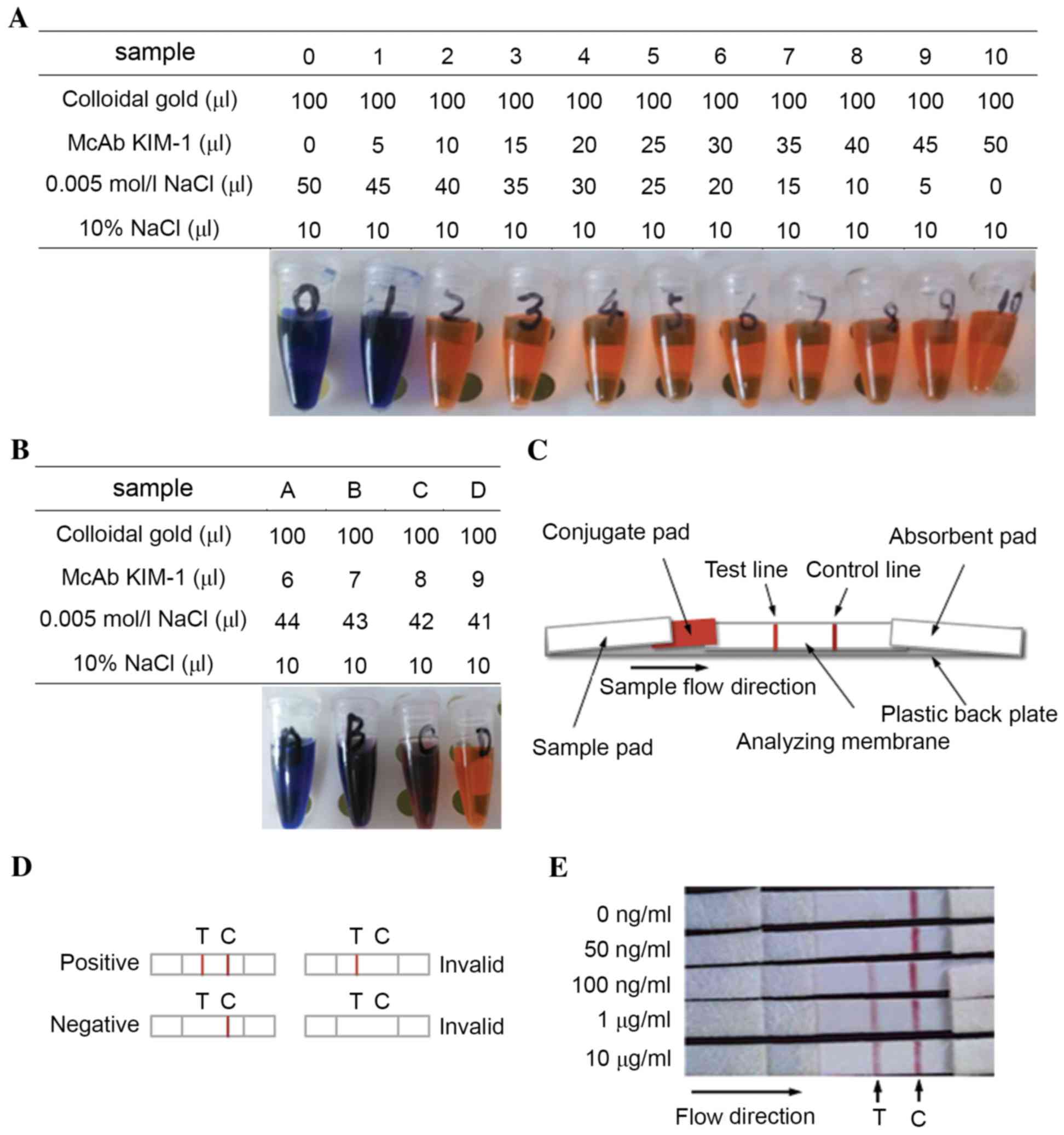Urinary kidney injury molecule‑1 as an early diagnostic biomarker of obstructive acute kidney injury and development of a rapid detection method
- Authors:
- Published online on: January 5, 2017 https://doi.org/10.3892/mmr.2017.6103
- Pages: 1229-1235
-
Copyright: © Jin et al. This is an open access article distributed under the terms of Creative Commons Attribution License.
Metrics:
Total
Views: 0 (Spandidos Publications: | PMC Statistics:
)
Total PDF Downloads: 0 (Spandidos Publications: | PMC Statistics:
)
Abstract
The aim of the present study was to investigate whether urinary kidney injury molecule‑1 (KIM‑1) presents a suitable early diagnostic biomarker of obstructive nephropathy‑induced acute kidney injury (AKI), and to develop a rapid detection method for urinary KIM‑1. Obstructive AKI was induced in an experimental rat model by a unilateral ureteral obstruction (UUO) operation. Macro‑ and micromorphological kidney alterations were determined by visual observation and hematoxylin and eosin (HE) staining, respectively. Kidney functions were evaluated by detecting urea nitrogen and creatinine levels in rat urine and blood. Urinary KIM‑1 levels were measured using an enzyme‑linked immunosorbent assay, and the protein expression levels of KIM‑1, α‑smooth muscle actin (α‑SMA) and vimentin in kidney tissues were detected using immunohistochemical assays. In order to measure KIM‑1 levels, colloidal gold immunochromatographic strips were developed based on the colloidal gold immunochromatographic assay. The results indicated that KIM‑1 levels were significantly higher in the UUO group when compared with the Sham group. KIM‑1 levels in the urine and kidney tissues exhibited a time‑dependent increase, together with increasing obstructive AKI in the UUO group. In addition, KIM‑1 levels were demonstrated to be a more sensitive biomarker of early obstructive AKI, when compared with α‑SMA and vimentin. A colloidal gold‑based immunochromatographic strip was developed, whereby the detection of urinary KIM‑1 could be completed within 5‑10 min. In conclusion, results of the present study demonstrated that urinary KIM‑1 may be a valuable biomarker for the early diagnosis of obstructive AKI, and the use of a colloidal gold immunochromatographic strip may be a promising method for the rapid detection of urinary KIM‑1.















